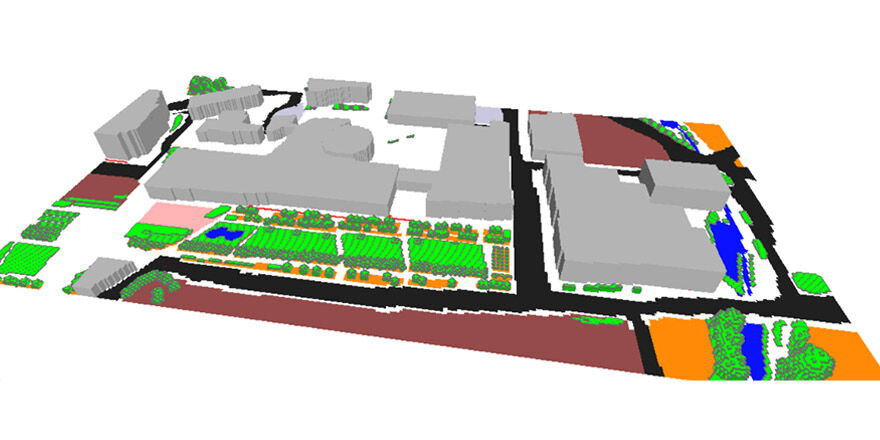Engineers will play a key role in global plans to move towards a carbon neutral world. Students on our engineering courses get the chance to expand their knowledge in many different areas, before conducting their individual honours project. We spoke to third year, BEng (Hons) Mechanical Engineering Student, Molly O’Neill, on her project, which uses the BCU campus as a case study for an urban forest, a radical idea designed to reduce carbon emissions.
My individual honours project investigates using computational fluid dynamics to assess the difference in carbon emissions if an urban forest were to be implemented on the BCU campus.
I conducted a tree survey to determine the carbon sequestration rates in the area, which gave an in-depth overview of the current vegetation at the campus. It was concluded that the silver Birch was the most common tree on campus. The silver birch can grow in the most difficult conditions which is ideal for their surroundings in the city centre, and they are also capable of absorbing up to 3100KG of CO2 in their lifetime.
I then went on to produce a model of the campus with different building heights and surfaces to visually represent the campus. The next step was to simulate the current emissions state, however after trying to do so for six months I had to resort in changing the method of the project as the simulations were taking months at a time to complete - time which I didn't have!

I decided to change the overall approach of the project to a theoretical method, which consisted of finding the current emissions using secondary sources and using different analytical techniques to review the most suitable combination of trees to plant to meet the following specification:
- Grows well in difficult conditions e.g., polluted areas like urban environments
- Mitigates the most carbon emissions possible.
- Does not grow any higher than 20m as it may become an eyesore and not fit in with the local landscape.
- The trees should be in leaf all year round and have a large canopy leaf area to maximise air quality improvement.
Engineering Courses
Find out more about our courses
I concluded that the most suitable combination of vegetation were silver birch trees, and soft shield fern shrubs. This differed from my initial thoughts, as shrubs were not considered, but during further research I found that they would be a suitable vegetation type for the urban environment and to achieve level of carbon sequestration rates required.
From my results, I found that planting an urban forest would be majorly beneficial to reducing carbon emissions. In the first year there would be a mitigation of 14748.41kg of CO2/year, to put this in to perspective, that is equivalent to mitigating the carbon produced by 5 diesel cars driving 11,500 miles per year!
I found that it would be a feasible option to implement an urban forest onto BCU’s City centre campus, however many other studies would have to occur to review how the project could be properly implemented.
This project has allowed me to research the environment and different possibilities of reducing our effect on climate change. This has led to a new-found passion and I hope to continue to make the most environmentally aware decisions whether at work or in my personal life, to protect our beautiful planet.




